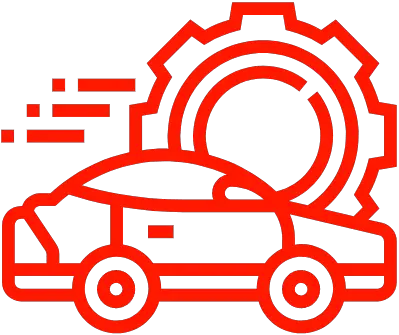Why is my Purge Valve Clicking? Here’s What You Need to Know
The purge valve is a small device located in the fuel system of most vehicles. It is responsible for releasing pressure from the fuel system and allowing the engine to start up properly. If the purge valve starts clicking, it is usually because of an issue with the fuel system or a lack of proper maintenance. Common causes for this clicking include a blocked or damaged fuel line, a clogged air filter, a faulty or worn out purge valve, or an incorrect adjustment of the valve. To diagnose and fix this issue, it is important to inspect all components of the fuel system and to replace any faulty parts. Doing regular maintenance on your vehicle can help prevent problems with the purge valve from occurring.
Automobile: Why is My Purge Valve Clicking?
One of the most common issues with automobiles is a clicking purge valve. The purge valve is part of the vehicle’s evaporative emissions control system, and helps to regulate the amount of fuel vapors that are released into the atmosphere. If your purge valve is clicking, it could be due to a variety of reasons.
Reasons Why Your Purge Valve is Clicking
One of the most common causes for a clicking purge valve is a clogged vacuum hose. This can prevent the proper flow of air in and out of the hose, resulting in a clicking sound. Another potential cause for this issue can be due to a faulty purge valve itself, which can either be worn or damaged. Finally, leaking fuel tank vacuum can also cause clicking noises from your purge valve.
Signs and Symptoms of a Faulty Purge Valve
If your vehicle’s purge valve is malfunctioning, there are several signs and symptoms you should look out for. These include engine misfiring or rough idling, rough acceleration, and failing an emissions test. It’s important to take note of any changes in performance or emissions as they may indicate an issue with your vehicle’s evaporative emissions control system.
Potential Causes of a Faulty Purge Valve
There are several potential causes for a faulty purge valve, including contaminated vacuum systems, warped or damaged components within the valve itself, and failing EVAP system components such as hoses or valves. It’s important to inspect all relevant components when diagnosing any issues with your vehicle’s evaporative emission control system in order to thoroughly identify the root cause of any issues you may be facing with your vehicle’s performance or emissions levels.
How to Diagnose a Malfunctioning Purge Valve
In order to diagnose any malfunctioning parts within your vehicle’s evaporative emission control system, it’s important to first check for any vacuum leaks that could be causing issues with airflow or performance levels within your engine compartment. Additionally, checking EVAP system continuity and pressure readings can help you determine if there are any further problems with related components such as valves or hoses that might be causing problems with your engine performance or exhaust emission levels.
What are the Costs Involved in Replacing a Faulty Purge Valve?
The costs associated with replacing a faulty purge valve can vary depending on the type and condition of parts required for replacement as well as labor costs associated with replacement procedures that may need to be performed by professional mechanics or technicians at an auto repair shop. It’s best practice to consult professional mechanics if you suspect any issues with parts within your vehicle’s evaporative emission control system in order to ensure you get accurate estimates regarding both parts and labor costs associated with repair procedures needed on your automobile
Why is My Purge Valve Clicking?
The purge valve is a key component of the vehicle’s evaporative emissions control system, and its purpose is to capture and store fuel vapors from the fuel tank. The purge valve works by allowing air to flow into the engine when it opens and closes, thus allowing fuel vapors to be sucked out of the tank. When this process occurs, a clicking sound may be heard coming from the engine compartment. This sound typically indicates that the purge valve is working as it should.
Tips to Maintain Your Vehicle’s Purge Valve
Maintaining your vehicle’s purge valve is essential for ensuring that it works properly and safely. Regularly checking for possible leaks or contamination issues in the EVAP system can help prevent any potential problems from occurring. Additionally, inspecting vacuum hoses and connections for signs of wear or damage can also help prevent any potential issues with the purge valve.
How to Properly Clean and Maintain Your Vehicle’s Purge Valve?
Properly cleaning and maintaining your vehicle’s purge valve is important for keeping it in good working condition. To clean it, use a damp cloth or soft brush to remove any dirt or debris that may have accumulated around the valve or its components. Additionally, you can use compressed air to blow away any dust or debris that may have accumulated in hard-to-reach areas. If there are any signs of corrosion or damage on the valve itself, contact a licensed technician for assistance with replacing it.
How to Test Your Vehicle’s Purge Valve?
Testing your vehicle’s purge valve is relatively simple and can be done using an OBD-II scanner tool. This tool will allow you to check for codes relating to any issues with the EVAP system such as leaks or clogs in vacuum hoses or other components. If no codes are found, then your vehicle’s purge valve likely functions correctly, but if codes are present then repairs may be necessary in order to restore proper functionality of the EVAP system.
What are the Benefits of Replacing a Faulty Purge Valve?
Replacing a faulty purge valve can provide several benefits including improved fuel efficiency and improved performance of other components within the EVAP system such as charcoal canisters and vacuum hoses. Additionally, replacing a faulty purge valve can also reduce emissions which can help reduce air pollution levels in your area as well as help protect your engine from potential damage due to incorrect air/fuel mixture ratios caused by a malfunctioning EVAP system.
What are the Safety Risks Associated with a Faulty Purge Valve?
A faulty purge valve could result in dangerous levels of carbon monoxide inside your vehicle cabin if not addressed promptly by a qualified technician who has experience troubleshooting EVAP systems on vehicles such as yours. Additionally, if left unchecked, carbon monoxide poisoning could occur due to incorrect air/fuel ratios which could lead to serious health risks including death if not addressed immediately by trained medical personnel
FAQ & Answers
Q: What are the signs and symptoms of a faulty purge valve?
A: The signs and symptoms of a faulty purge valve include engine misfiring or rough idling, rough acceleration, and failure of an emissions test.
Q: What are the potential causes of a faulty purge valve?
A: The potential causes of a faulty purge valve include contaminated vacuum systems, warping or damage to the purge valve components, and failing EVAP system components.
Q: How can I diagnose a malfunctioning purge valve?
A: To diagnose a malfunctioning purge valve, you should check for vacuum leaks and test the EVAP system’s continuity and pressure readings.
Q: What is the cost involved in replacing a faulty purge valve?
A: The cost involved in replacing a faulty purge valve includes the cost of parts required for replacement as well as any potential labor costs associated with replacement procedures.
Q: How can I maintain my vehicle’s purge valve?
A: To maintain your vehicle’s purge valve, you should regularly check the EVAP system for possible leaks or contamination issues and properly clean and inspect all vacuum hoses and connections for signs of damage or wear & tear. You should also regularly test the functionality using an OBD-II scanner tool.
In conclusion, the clicking noise coming from your purge valve is likely caused by a vacuum leak. This can be caused by a faulty or worn out purge valve, a loose hose or pipe connected to the valve, or a crack in the vacuum line. If you are unable to identify and fix the issue yourself, it is highly recommended that you seek professional assistance from an auto mechanic to identify and repair the problem.
Author Profile

-
With more than 30 years in the bicycle industry, I have a strong background in bicycle retailing, sales, marketing and customer service. I have a passion for cycling and a dedication to excellence. As a manager, I worked diligently to increase my capabilities and responsibilities, managing up to eleven mechanics (at Palo Alto Bicycles) and later as a working partner in my own store.
As the shop owner of Spoke n’ Word Cycles in Socorro, NM, the success of the mission was my responsibility, which I pursued passionately since we opened in 2003 through the spring of 2011. I am adept at managing owned and loan inventory, preparing weekly & annual inventory statements, and managing staff. The role as managing partner also allowed me tremendous freedom. I used this personal freedom to become more deeply involved in my own advancement as a mechanic, to spearhead local trail building, and advocating for cycling both locally and regionally.
As a mechanic, I have several years doing neutral support, experience as a team mechanic, and experience supporting local rides, races, club events. I consistently strive to ensure that bicycles function flawlessly by foreseeing issues and working with the riders, soigners, coaches and other mechanics. Even with decades of experience as a shop mechanic and team mechanic, and continue to pursue greater involvement in this sport as a US Pro Mechanic, and UCI Pro Mechanic.
Latest entries
- July 26, 2023BodyFind the Best Grill for Your 2007 Toyota Tacoma – A Complete Guide
- July 26, 2023BodyUpgrade Your Ford Escape with the Best 2008 Grill – Here’s How!
- July 26, 2023Bumper Stickers, Decals And MagnetsBest Chevy 1500 Door Emblem: Upgrade Your Truck with a Stylish Emblem
- July 26, 2023Marker Light AssembliesGive Your 2008 Dodge Dakota a Makeover with the Best Grill Upgrade
